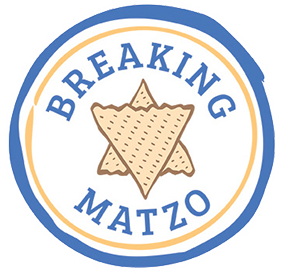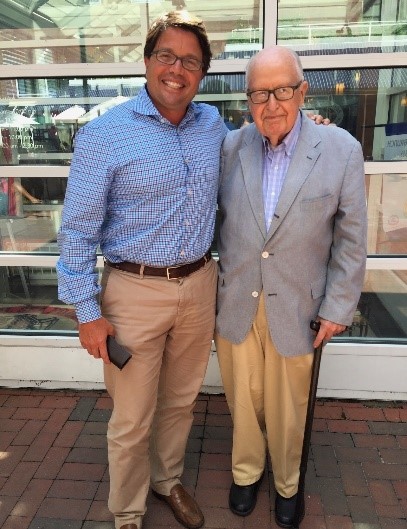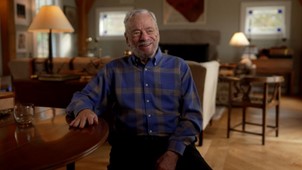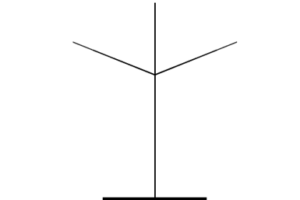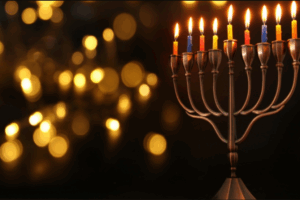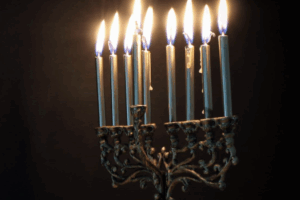In October, 2024, the United States Navy sent an aircraft carrier; the USS Abraham Lincoln, to the Arabian Sea to help defend Israel from the threat of the Iranian terrorist regime. The ship arrived in the region at the beginning of Succot. The Chabad-Lubavitch Chaplain Lieutenant Yohoshua Rubin arranged for the construction of a Sukkah on board the ship.
Rubin’s first hurdle was finding a spot on the carrier open to the sky, as required for a sukkah. Once he found a spot on the ship’s weather deck, there were forms to fill out and permissions to obtain.
Ultimately, it all came together in time for the Sukkot. The key ceremonial objects of the Lulav and Etrog were flown in from Bahrain by carrier onboard delivery aircraft…just in time for the arrival of the Holiday!
You can read more about this story here.
Let’s explore the Talmud on whether a succah on a ship is kosher?
In the Talmud, Sukkot 23a, Rabbi Gamliel and Rabbi Akiva argued about whether a succah on a ship can be kosher. Rabbi Akiva built a succah on a ship but later found it blown over by the wind. Rabbi Gamliel explained that a sukkah needs to be able to withstand wind to be kosher. However, Rabbi Akiva explained that there is a difference between wind of the land and wind of the sea. His succah was able to withstand the wind of the land but the wind of the sea was too much. Rabbi Akiva therefore concluded that a succah on a ship can in fact be kosher.
This Talmudic portion highlights two topics that I believe are worth exploring. The significance of a boat and the significance of water.
Let’s explore the torah for the meaning of a boat. Two references come to mind. Noah’s Ark in Genesis and Moses’ Basket during Exodus (You can read more about the parallels of these passages here.
Both Noah and Moses involved a boat (an ark for Noah and basket for Moses) which delivered them through the water to a new beginning. Although the waters were stormy and dangerous, based on their faith in Hashem (G-d), Moses and Noah were able to persevere.
Water highlights potential risks and dangers. The Great flood in Noah’s Ark destroyed the earth and its remaining inhabitants. Many Hebrew male babies were drowned in the Nile while Moses safely eluded death due to his basket and his rescue by Pharaoh’s daughter, Bitya. You can more about this rescue here.
Moses then safely delivered the Children of Israel across the Sea of Reeds (Red Sea) from Slavery in Egypt, to the Wilderness for 40 years, and later to the Promised Land, Eretz Yisrael. Pharoah’s army which pursued the Children of Israel perished in the Sea of Reeds (Red Sea) which closed after the Children of Israel safely crossed over to dry land.
Being in water highlights our vulnerability to the elements. A meaning of the succah is to reconnect ourselves in the outdoors and be vulnerable to the elements and the approaching winter season.
Why is the Succah not built solidly – to withstand the elements?
Let’s explore the fallacy of a firm foundation. In Japan, the tallest skyscrapers are built with a movable foundation in order to withstand earthquakes. Their durability is derived from their instability. This is a poetic connection with the Sukkah’s ephemeral and incidental construction – temporary and vulnerable, but significant.
Returning to Noah’s Ark and Moses’ Basket. In the torah, they are described as a “Teva” and the dimensions and shape are of a rectangle. This is not the most hydro dynamic shape for a floating vessel. In addition, the teva lacked a keel which is key for a boat’s effective navigation. Nevertheless, despite not having keel and being shaped like a rectangle, Noah and Moses were able to navigate turbulent waters.
Conclusion:
The past year (2023 / 5784) since the October 7 Hamas Massacre has been the most challenging year for Jews and Israel since the Holocaust. We have experienced greater vulnerability and threat than we have previously faced since WWII. Despite the horrors of October 7 and the complicit and complacent world views of indifference and virulence, I believe that Jews have become even stronger and more united. Our faith in Hashem (G-d) has helped the Children of Israel navigate these turbulent times and stormy seas. The lack of a keel did not deprive Jews of the spiritual steering drawn from faith of God.
Returning to the succah on the USS Abraham Lincoln. It is poetic and prophetic that our Succot of 2024 is exemplified by a succah on ship on a stormy sea. Despite the extra vulnerability and instability, we have been able to persevere. Despite the hate in the world, Israel and Jews have become even more united. Despite the hate within the world, we have found friendship and support from many allies outside of Israel and outside our Jewish community, such as Bahrain helping with the lulav and etrog.
Most importantly, we have found our fervent faith in Hashem (G-d) to provide spiritual support, even on a succah in a stormy sea.
Further Reading:
Bahrain has been a great supporter of Israel and Jews
- In 2019, Bahrain was the first Arab country to publicly declare and defend Israel’s right to self-defense. You can read more about it here.
- Bahrain was the first Arab country to have a Jewish Ambassador. You can read more about it here.
- In 2015, King of Bahrain hosted a Hanukkah Menorah Celebration in the royal palace. You can read more about it here.
Japan and the Fallacy of Firm Foundations:
The high rises of Tokyo, Osaka and Yokohama dominate the cityscapes around them. The towers give the impression of being as immovable and steadfast as a human-made structure can be. These towers are the fixed backdrop to daily urban life in Japan, as they are in any large and developed city in the world. While people and traffic bustle around them, they are fixed and still – the pins that hold the rest of the hectic city together. It takes an earthquake to reveal that perspective to be an illusion. In Japan, skyscrapers have to be able to move. You can read more about this here.
Sukkot 23a
The mishna summarizes that this principle: Any case where, were the tree removed, the sukka would be able to remain standing in and of itself, it is fit, and one may ascend and enter it on the Festival, since the tree is not its primary support.
גְּמָ׳ מַנִּי מַתְנִיתִין — רַבִּי עֲקִיבָא הִיא. דְּתַנְיָא: הָעוֹשֶׂה סוּכָּתוֹ בְּרֹאשׁ הַסְּפִינָה — רַבָּן גַּמְלִיאֵל פּוֹסֵל, וְרַבִּי עֲקִיבָא מַכְשִׁיר.
GEMARA: The Gemara comments: In accordance with whose opinion is the mishna? It is in accordance with the opinion of Rabbi Akiva, as it is taught in a baraita: In the case of one who establishes his sukka at the top of the ship, Rabban Gamliel deems it unfit and Rabbi Akiva deems it fit.
מַעֲשֶׂה בְּרַבָּן גַּמְלִיאֵל וְרַבִּי עֲקִיבָא שֶׁהָיוּ בָּאִין בִּסְפִינָה, עָמַד רַבִּי עֲקִיבָא וְעָשָׂה סוּכָּה בְּרֹאשׁ הַסְּפִינָה. לְמָחָר נָשְׁבָה רוּחַ וַעֲקָרַתָּה. אָמַר לוֹ רַבָּן גַּמְלִיאֵל: עֲקִיבָא! הֵיכָן סוּכָּתְךָ?
There was an incident involving Rabban Gamliel and Rabbi Akiva, who were coming on a ship. Rabbi Akiva arose and established a sukka at the top of the ship. The next day the wind blew and uprooted it. Rabban Gamliel said to him: Akiva, where is your sukka? It was unfit from the start.
אָמַר אַבָּיֵי: דְּכוּלֵּי עָלְמָא, הֵיכָא דְּאֵינָהּ יְכוֹלָה לַעֲמוֹד בְּרוּחַ מְצוּיָה דְּיַבָּשָׁה — לֹא כְּלוּם הִיא. יְכוֹלָה לַעֲמוֹד בְּשֶׁאֵינָהּ מְצוּיָה דְּיַבָּשָׁה, כּוּלֵּי עָלְמָא לָא פְּלִיגִי דִּכְשֵׁרָה. כִּי פְּלִיגִי בְּדִיכוֹלָה לַעֲמוֹד בְּרוּחַ מְצוּיָה דְּיַבָּשָׁה וְאֵינָהּ יְכוֹלָה לַעֲמוֹד (בְּרוּחַ שֶׁאֵינָהּ מְצוּיָה דְּיַבָּשָׁה). רַבָּן גַּמְלִיאֵל סָבַר: סוּכָּה דִּירַת קֶבַע בָּעֵינַן, וְכֵיוָן דְּאֵינָהּ יְכוֹלָה לַעֲמוֹד בְּרוּחַ מְצוּיָה דְּיָם — לֹא כְּלוּם הִיא. רַבִּי עֲקִיבָא סָבַר: סוּכָּה דִּירַת עֲרַאי בָּעֵינַן, וְכֵיוָן דִּיכוֹלָה לַעֲמוֹד בְּרוּחַ מְצוּיָה דְּיַבָּשָׁה — כְּשֵׁרָה.
Abaye said: Everyone agrees that in a case where the sukka is unable to withstand a typical land wind, the sukka is of no consequence and it is not even a temporary residence. If it is able to withstand even an atypical land wind, everyone agrees that the sukka is fit. Where they disagree is in a case where the sukka is able to withstand a typical land wind but is unable to withstand an atypical land wind, which is the equivalent of a typical sea wind. Rabban Gamliel holds: In order to fulfill the mitzva of sukka, we require a permanent residence, and since it is not able to withstand an atypical land wind, which is like a typical sea wind, it is of no consequence and is not a sukka at all. Rabbi Akiva holds: In order to fulfill the mitzva of sukka, we require a temporary residence, and since it is able to withstand a typical land wind, it is fit, although it is unable to withstand a typical sea wind.
You can read more about the Mishna here.
